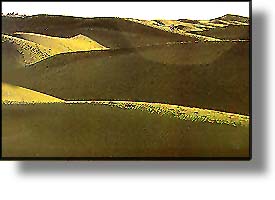Nepal Homepage | Asia Homepage | The World
 Nepal's identity as a travel destination is
inseparable from the Himalayan peaks found within its
borders. Long confined to serious mountaineers, these
Himalayan regions have more recently become popular as
trekking destinations, offering on their lower slopes
alpine terrain of unparalleled beauty. The appeal of
Nepal is not, however, confined to its upper altitudes:
the relatively tame terrain of the Kathmandu Valley and
the Terai, while less visually spectacular, also have
plenty to offer.
Nepal's identity as a travel destination is
inseparable from the Himalayan peaks found within its
borders. Long confined to serious mountaineers, these
Himalayan regions have more recently become popular as
trekking destinations, offering on their lower slopes
alpine terrain of unparalleled beauty. The appeal of
Nepal is not, however, confined to its upper altitudes:
the relatively tame terrain of the Kathmandu Valley and
the Terai, while less visually spectacular, also have
plenty to offer.
Despite its popularity among travellers over the last couple of decades, this fertile valley continues to offer a living window into Nepal's ancient history. Bhaktapur, seat of a medieval kingdom, remains unspoiled by cars or modern buildings. Members of different castes live in separate neighborhoods, each with its own square, water source and temples. Nagarkot, on the eastern edge of the valley, rewards hikers with panoramic views of five of the world's ten highest peaks: Everest, Lhotse, Cho Oyu, Makalu and Manaslu. Eight- to ten-day whitewater rafting trips down the Sun Kosi River (to the east of Kathmandu) offer first-hand views of Nepali village life (and plenty of rapids).
Chitwan National Park, famous throughout Asia for the variety of its game animals, is one of the few wildlife parks in the world that allows visitors to walk around on foot. The park is home to many rare species, including the Asian one-horned rhinoceros, Bengali tigers, elephants, jackals, hyenas, leopards, rhesus monkeys, and wild boars. Visitors who want to experience the interior of the park can travel down the Rapti River in dugout canoes and camp along the riverbanks. In December of each year, one of the park's lodges sponsors an elephant polo tournament, perhaps the only sporting event of its kind in the world.
The Annapurna Region
The trail leading around the Annapurna Massif gives trekkers the full range of Nepal's topography, from tropical vegetation to sparse, rocky mountaintops. As the trail climbs steadily upwards, hikers cross rivers on rickety suspension bridges and walk through gorges so deep the sun rarely reaches them. The high point (literally) is the Thorong La Pass, at 5,250 meters (17,222 feet). The section of trail after the pass provides stunning views of the Annapurna and Dhaulagiri ranges, with the Kali Gandaki River flowing between them far below.
The Annapurna Sanctuary Trek leads directly into the mountains. A single narrow trail rises through rhododendron and bamboo forests into the Sanctuary, a secluded meadow surrounded by sheer cliff faces. The area was sacred to the native Hindu peoples, who considered it the dwelling place of local gods.
The Everest Region
The trek to Everest Base Camp is strenuous, with many sudden changes in altitude. The first days out of Jiri, the traditional trailhead, take trekkers through Buddhist villages and past Thubten Choling, Nepal's largest monastery. Higher up, the trail wends its way through mountains, glaciers and spacious valleys. For a taste of Nepali folklore, stop at the Pangpoche monastery, where visitors can view what is supposedly the preserved hand and scalp of a Yeti (Abominable Snowman). The final goal: the top of Kala Pattar (18,200 ft), with spectacular views of Everest and other snow-covered peaks.
Helambu
For visitors short on time and/or energy, Helambu offers a taste of trekking in less than a week and without sharp changes in altitude. The trail, which starts only a few miles out of Kathmandu, gives trekkers an introduction to Nepal's diverse topographies, from terraced farms to snow-capped mountains. The trail also offers a glimpse into Sherpa life, leading through villages of traditional stone houses where yaks can still be seen carrying supplies.
Nepal Homepage | Asia Homepage | The World
